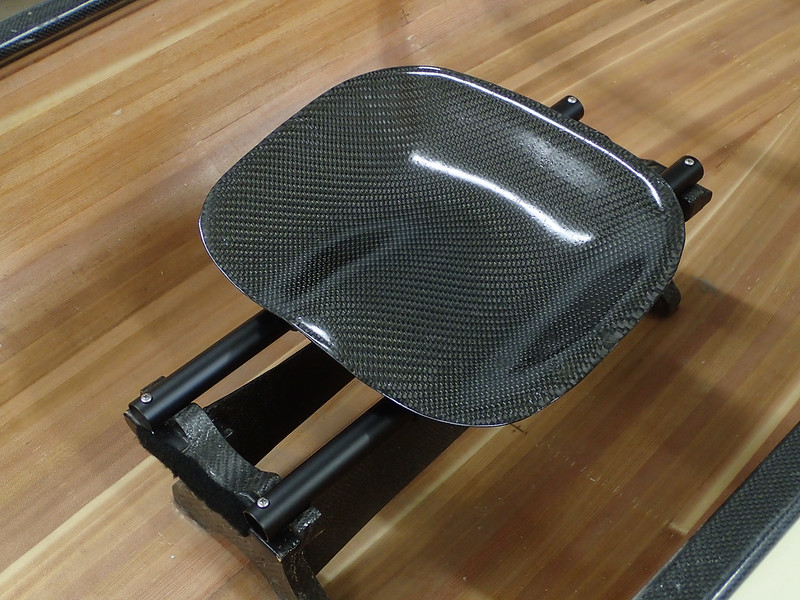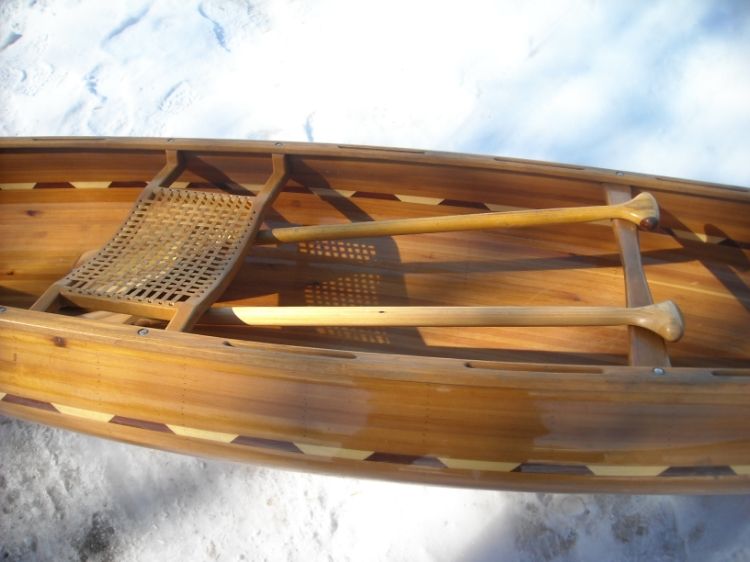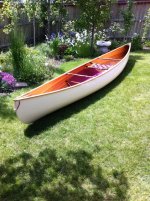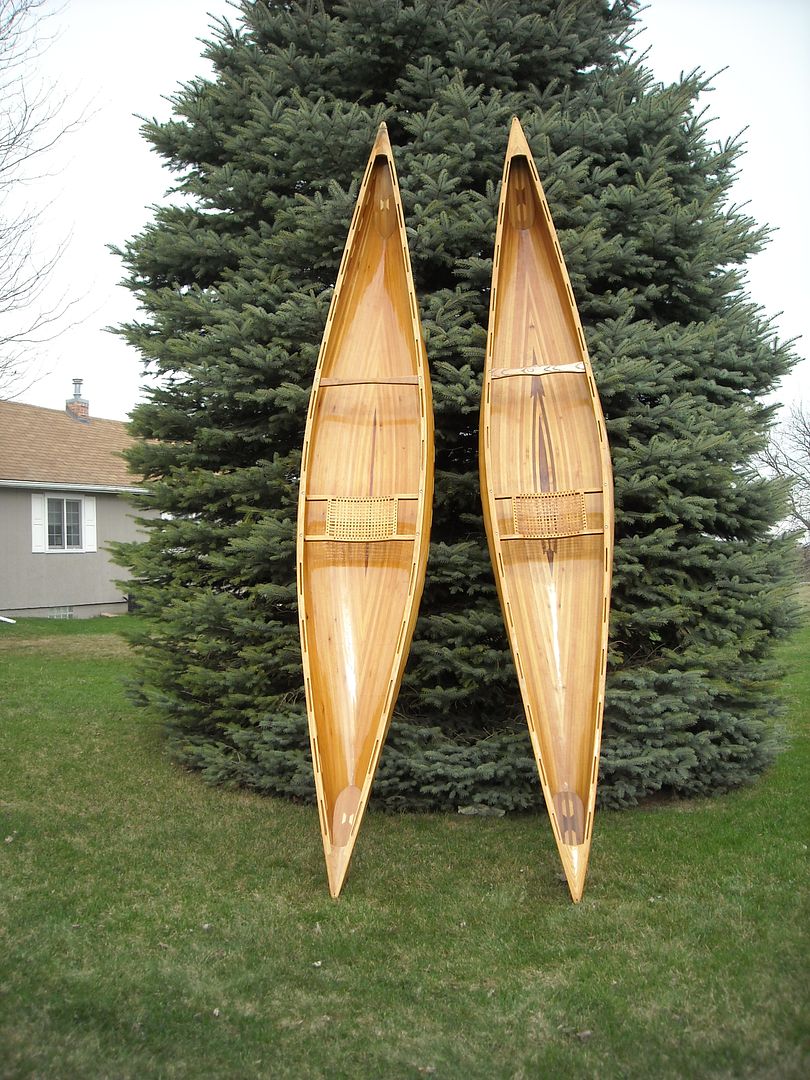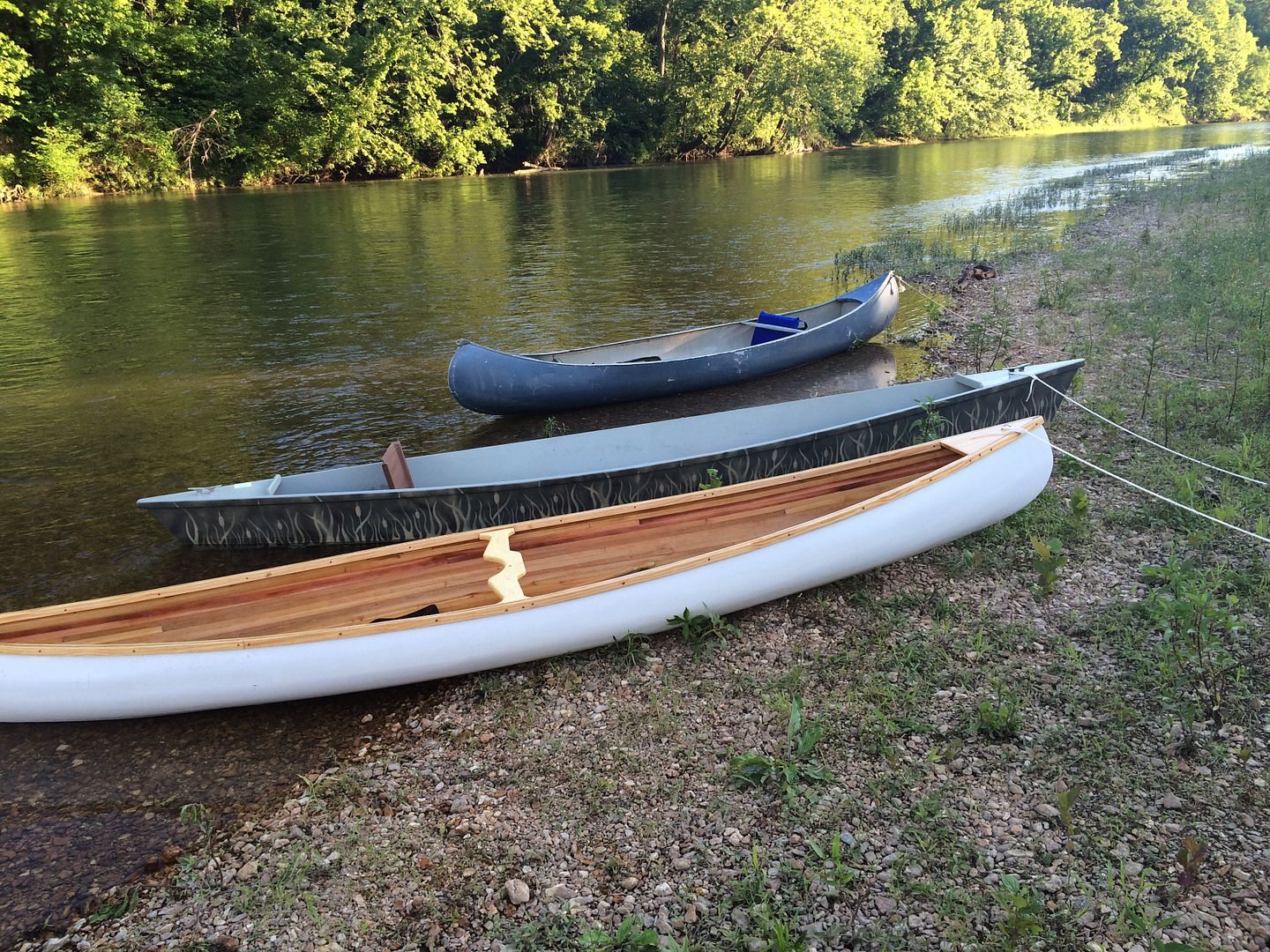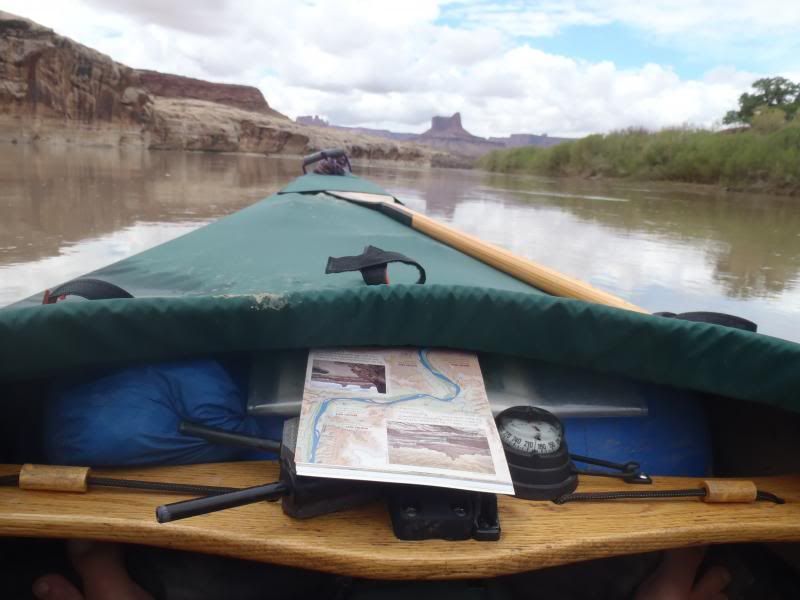Thanks for the question PC. The following is long-winded, but hopefully it can contribute to your future boat design considerations.
I have been solo paddling small tandems exclusively throughout my life, mostly classic prospector-ish designs, many called "prospectors". For the past 25 or so years, exclusively in two Trailhead Prospectors, one composite, one royalex. These are small 16's, and measure 15'8", with a 34 inch beam, so they have a narrower profile than many common prospectors that are listed as 36" beam. Ideally I would like to find a large capacity 33 or 32 inch beam boat for solo with the depth to accommodate big water (rapids and big choppy lakes. Most solos on the market I see are too shallow and too narrow for my 3-6 week loads, and size of waves I encounter). I also like to stand up in the boat to scout, pole, do photography, and to stand and lean the boat up without getting out in order to edge it through rock gardens.
I use the stock bow seat as-is, paddling facing the other way. Bow seat is the standard flat type with lacing (modern cord, not cane, but it emulates the old cane woven type). I kneel and have no problems with getting my feet under the seat. I glued in flat foam (no cups) across the bottom and up the chines for kneeling. I paddle mostly left side, Canadian stroke, with an aggressive lean on the boat loaded or empty, always with a lean, unless its rapids or a windy chop where I will flatten the boat’s ride. Because the prospector likes to want to tilt itself back down when leaned up, then I can get my hip very close to the gunwale. Getting my hip close to the gunwale IMO makes the Canadian stroke what it is. All the angles change the further away from the gunwale that your hips get. I get my smoothest CS for efficient all-day cruising when my hip is close to and almost touching that gunwale. This is one reason why I like a wide boat, because it wants to tilt itself back instead of rolling and tipping. The more the tension of tilt-back force, the more I can "lean into the lean" and get that hip towards the gunwale, and it makes everything better for how my body works. I am short (5”4”

, short torso, short arms, and so that likely affects why I need to get close to the gunwale. I think tumblehome might be a critical component of this close-to-gunwale hip position, but that's another topic. But all these things affect how we kneel from, and sit on seats, so its complicated!

By gluing a flat foam pad surface across the entire kneeling space, I have a space to accommodate a range of kneeling positions. I kneel sometimes with my knees together in the chine, and in other positions depending on wind and chop, or if running rapids. In winds not conducive for paddling on my left, I have to J or rough Canadian on my right, and also just to rest the left side occasionally. In rapids, or big waves and winds, I am moving toward the middle more and spreading the knees wide. In my tripping boat I cannot reach chine to chine, but the foam I use is fairly grippy. I will lift and slide the knees much more to the offside stroke side to get close to that side, including sliding the right knee into the right chine. With no knee cups in the way, shuffling knees instantly is very easy. But in the bow seat facing the other way, the beam is much narrower there. I can't see doing what I do if I had to sit in the center of a 34 inch beam boat.
I sit on the seat occasionally to stretch the legs and get the blood flowing. Legs get cramped in the kneeling position if I don't stretch out occasionally. I sit in a sort of half open cross legged position, knees facing down but not touching the bottom, feet underneath the seat where the lower legs cross, and that way the outside of each foot (boot) is jammed into the bottom of the boat, and this provides the body grip to paddle while sitting, without pulling myself off the seat. Hence I don't need foot braces out front, since my feet are effectively braced underneath. However this cross-legged position will also eventually cramp up. So I move around alot, and the height of the seat allows me to do this. The seat is suspended from wood gunwales by seat bolts and spacer blocks, and its all adjustable if need be. Suspended seat bolts do however move a lot on every stroke, and I have snapped them, so I carry extra seat bolts in my repair kit.
I paddle OC playboat with a WW saddle in the middle, cupped knee foam, thigh straps, foot pegs, the whole bit, and so I know very well what I am sacrificing in my tripping boats for moving water maneuverability with using the stock bow seat facing the other way. That long pack laden boat in front of me, although trimmed, is still a pig in rapids. I will lift my butt way off the seat to lean forward, especially for the cross bow draw, but of course its not optimum. I wish I could reach in front to the center of the boat. But I really like the permanent center yoke for all the portaging I do, and can't see myself sitting in the center of a big, high capacity tripping boat.
I have thought of moving the bow seat closer to the center, but then I sacrifice some ability to reach to the other side for off side strokes. Also I forgot to mention above that I do use a sea kayak blade for cruising on my long trips (4-6 week trips), when my boat is heavily laden with food and fuel, and grizzly gun, ammo, camera gear, and just a bigger expedition load. Being in the stock bow seat brings the gunwales that much closer for using the sea kayak paddle, so I am not likely to move it forward towards the center.
PC: if you could stretch that Caribou-S to maybe 15' 6", and widen the max beam (gunwale to gunwale) to 32" or 33", keep it nice and deep to 14-15", make it cheeky enough towards each end for lots of pack capacity, then this might be the perfect long trip solo for me. Install a permanent center yoke, and move the solo seat back enough to make room for the paddler. Basically a 15 1/2 foot prospector, just slimmed down a tad, no stern seat, with entry lines a little more buoyant, but not too much because I do want some wave slicing performance.

